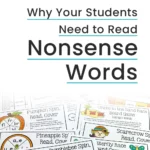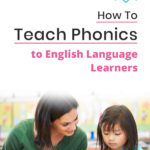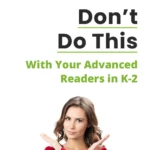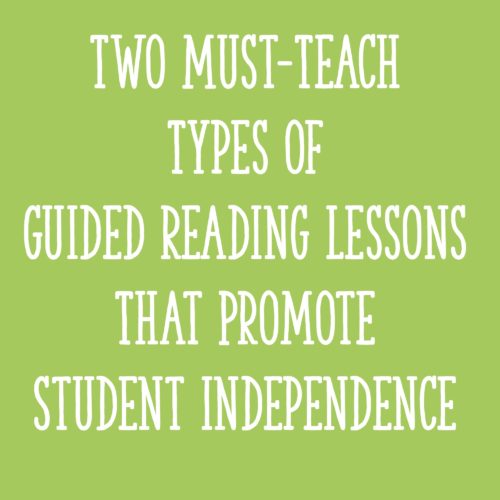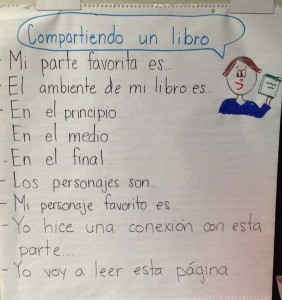If you haven’t heard the term “nonsense words” used in the context of phonics instruction, or if you’re unsure how (or why) to have your students practice them, you’re in the right place! Nonsense words can be such a useful tool for any students learning phonics skills or in need of a refresher. Adding in a couple of minutes of nonsense word reading to your phonics routine is a great idea!
In this blog post, I’ll explain what nonsense reading is, share why it’s so beneficial, and give ideas for a few activities to use with your Kindergarten, first grade, or second grade students.
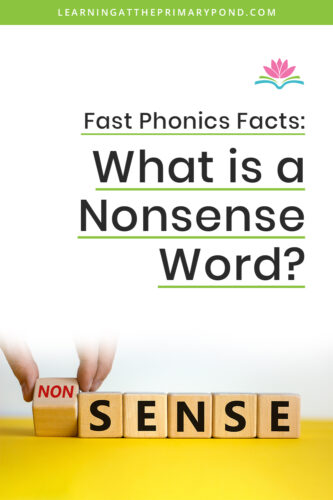
What is a Nonsense Word?
A nonsense word is a word that can be decoded or pronounced by following the “regular” phonetic rules of English. However, it’s not a real word – there’s no listing or definition in the dictionary for it! Here are a few examples:
- bep
- shim
- ruzz
- pake
- teeb
- blug
With these words, you have to use phonics knowledge to decode them. Take the word “shim” – you need to know that the “s” and “h” come together to make a digraph, one sound /sh/. The “i” produces a short i vowel sound, and the “m” makes the /m/ sound.
At first glance, you might assume that nonsense words could be confusing for kids or even a waste of time. To be honest, I used to think that, too! But the more I’ve learned about phonics and bad reading habits that some kids form, the more I’ve realized how beneficial nonsense words can be. Here’s why:
You may have noticed that, as your students grow in their reading, their sight word vocabularies grow. They can open a book and read many of the words instantly. This is a good thing!
However, if students are reading successfully because they know so many sight words – and they’re not applying their phonics knowledge – that could be problematic. Because when they encounter a word that they’ve never seen before, they’re not going to know what to do with it. They need to use phonics knowledge to decode it, but instead, they might guess or even skip over the word.
Students can also over-rely on the context of a book or passage for decoding. For example, when reading the sentence “The girl kicked the ball,” a student may have read the word “kicked” correctly. But what would happen if you took that word out of the context of a story and just presented it by itself? When there’s no sentence to accompany the word and no story to rely on, sometimes students can’t decode like you thought they could. This is where nonsense word practice comes in handy!
What Are Some Ideas for Using Nonsense Words?
Blending Drill:
The main way that I like to work on nonsense words is through something called a blending drill. You can do it with real words and with nonsense words. Here’s an example of how the blending drill might begin –
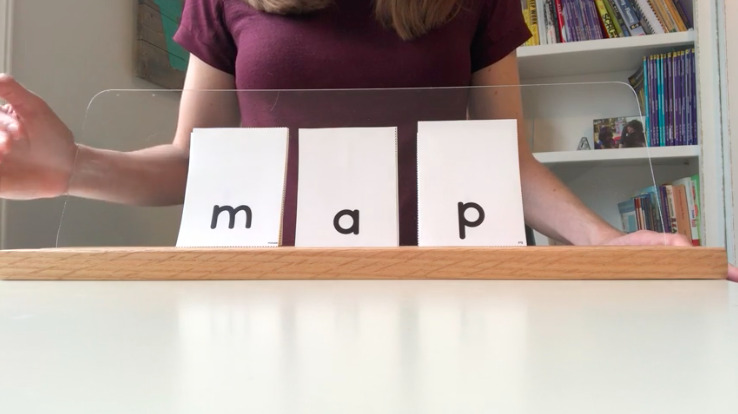
This word, of course, is a real word that says “map.” The kids could decode it by saying /m/ /a/ /p/ and then blending it to make “map.” Now, let’s say I turn the “m” card and it’s now the following –
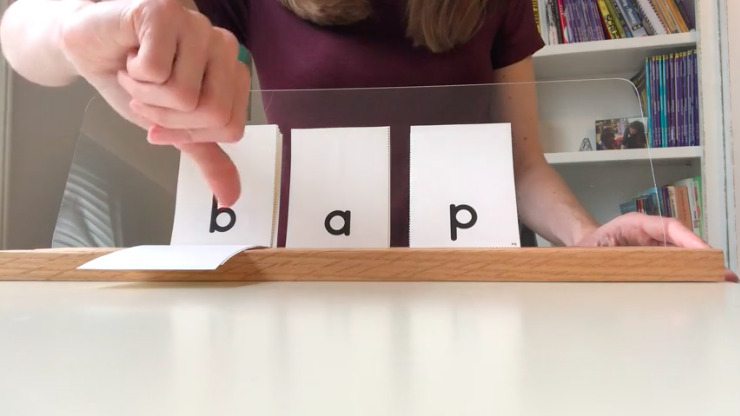
Now the word says /b/ /a/ /p/, bap. I’d still have the students decode the nonsense word. I wouldn’t skip this or try to avoid it because this is an opportunity for them to read a nonsense word, and be required to apply their phonics knowledge. Once students decode the word, they can either give a thumbs up or thumbs down to signify if it’s a real word or a nonsense word.
The above example shows CVC words, but you can do it with more challenging words as well. You can include cards with digraphs, vowel teams, diphthongs… whatever phonics skills you’ve taught your students! (If you could use a free scope and sequence to see the order I recommend teaching the skills, click here for that!)
Nonsense Word Games:
I have nonsense word games available for K-2 that are Summer, Fall, Winter, and Spring themed! This is a great way for students to play games, solo or with a partner, to practice those decoding skills. Here are a couple of examples:

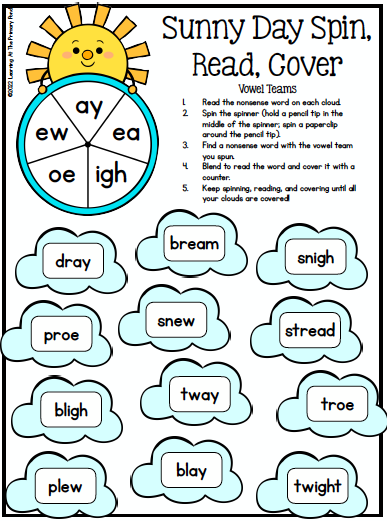
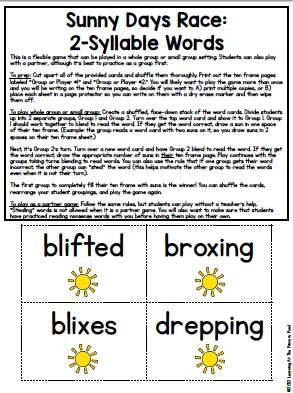
Nonsense Word Reading Assessment: I like to use a mixture of real words and nonsense words when giving a phonics assessment. When you use nonsense words, you don’t have to wonder if students are actually decoding or just reading a word by memory/sight.
Here is an example of one page from an assessment made up of nonsense words (this is included in all of my Nonsense Word Game products):
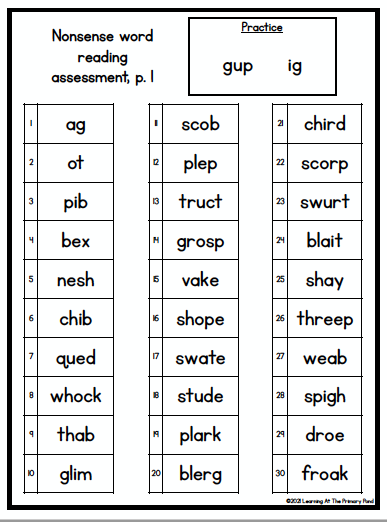
Here’s another small assessment you can use from my Reading Intervention Packs that includes a mixture of real and nonsense words:

Using these types of assessments can help you determine which phonics skills your students have already mastered and which skills they may need more support with.
Conclusion
I hope this explanation and ideas were helpful to you! Check out the Nonsense Word Game Bundle for K-2 which includes all four seasons! There are 180 games included in this product!

Happy teaching!

